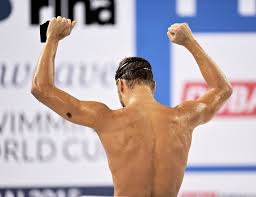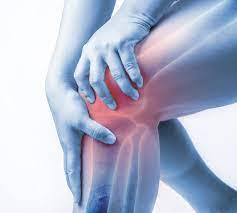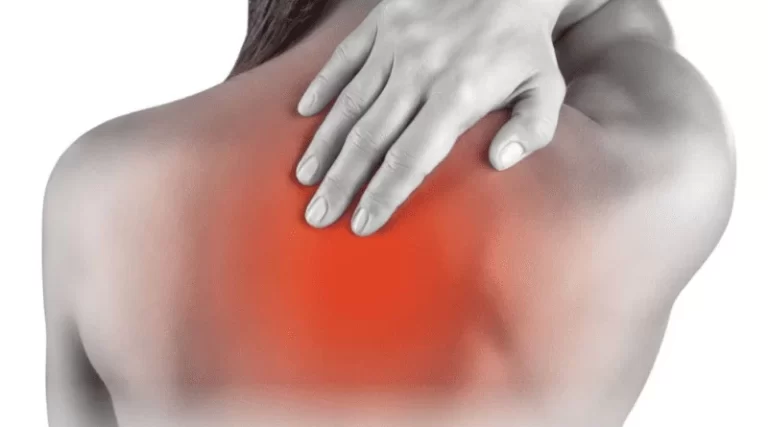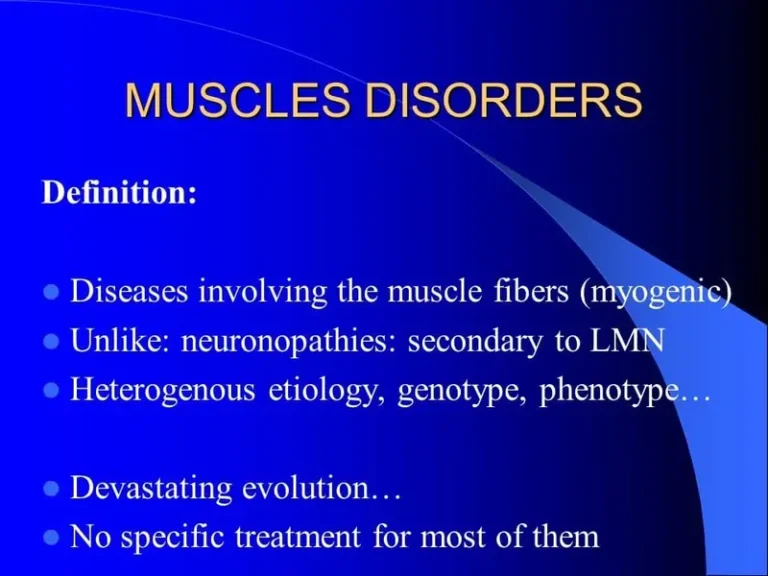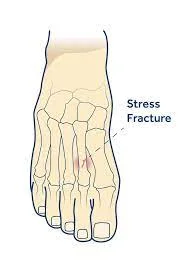Swimmer’s Shoulder
Table of Contents
Introduction
Swimmer’s shoulder is a condition that causes shoulder pain, weakness, and other symptoms in the shoulder joint. It’s a catch-all term for a variety of problems with similar symptoms.
The shoulder complex is intended to have the most range of motion (ROM) and degrees of freedom of any joint system in the body. The stability of the acromioclavicular (AC) and sternoclavicular joints balances the excessive mobility of the shoulder at the glenohumeral and scapulothoracic joints.
A complex ligamentous system contributes to primary stability at the glenohumeral joint, while an elaborate musculotendinous system is a secondary stabilizer. This support mechanism allows the shoulder to withstand large external forces while allowing the upper extremity to perform complex movement patterns.
Sports that require overhead motions provide perhaps the best example of the balance between shoulder mobility and stability. Many overhead sports require two or three overhead movement patterns, such as throwing, racket sports, and volleyball. Swimming, on the other hand, necessitates a variety of overhead movement patterns involving continuous humeral circumduction in both clockwise and anticlockwise directions.
A competitive swimmer typically performs more than 4000 strokes for one shoulder in a single workout, making this sport a common source of shoulder pathology. Shoulder pain is the most common musculoskeletal complaint in swimming, with reports ranging from 27% to 87% of competitive swimmers experiencing disabling shoulder pain.
This clinical commentary aims to provide an overview of swimming biomechanics, the causes of the clinical entity known as swimmer’s shoulder, and injury prevention and treatment strategies.
Types of Swimmer’s shoulder
Swimmer’s shoulder is a term doctors use to describe various shoulder conditions. Your provider may tell you that you have a more specific problem, such as:
Shoulder impingement syndrome occurs when the top outer edge of your shoulder blade (scapula) pinches your rotator cuff beneath it, causing pain.
Rotator cuff tendonitis
Rotator cuff tendinitis is exactly what it sounds like rotator cuff tendinitis is tendinitis that affects your rotator cuff. Tendinitis is a tendon inflammation or irritation.
Injuries to the shoulder labrum
The shoulder labrum is a layer of cartilage that protects and stabilizes your shoulder joint.
Muscle strains
Muscle strains (pulled muscles) in the shoulder are injuries that cause a muscle to tear.
Pinched nerves
Pinched nerves occur when tissue around a nerve traps it or puts too much pressure on it, causing it to send pain signals to your brain.
Causes of Swimmer’s shoulder
When your shoulder joint experiences continuous stress and strain, the swimmer’s shoulder develops. The additional strain irritates your tissue over time. Tiny tears form in the inflamed tissue, resulting in scarring and inflammation. The damage makes it difficult for your joint to move freely.
It may seem obvious, but swimming is the most common cause of a swimmer’s shoulder. More specifically, it is caused by competitive training or frequent swimming for exercise. Swimming is a great workout, but it can put a lot of strain on your shoulder joints, especially if you’re pushing yourself to improve your strength, speed, and race times.
Swimmer’s shoulder can occur as a result of any activity or job that requires you to use your shoulder in a repetitive motion with your arms overhead. It is common in sports requiring a lot of throwing (such as baseball) or physically demanding jobs.
Signs of Swimmer’s shoulder
A common symptom of swimmer’s impingement is pain radiating down the back of your shoulder that feels deeply embedded in your muscles. In some cases, you may also feel pain in the front of your shoulder.
Repetitive overhead reaching, such as when swimming, can exacerbate this pain. The longer you swim in one session, the worse your pain will get. When this happens, it’s called shoulder tendonitis, which is an inflammation of the biceps and supraspinatus shoulder muscles.
Because different parts of your shoulder can be injured while swimming, you may experience pain ranging from localized pain near your shoulder joint to pain that travels up your neck and shoulder or down your arm.
Symptoms of Swimmer’s Shoulder
The most common swimmer’s shoulder symptoms are:
- Your shoulder has a shorter range of motion than your other shoulder.
- A higher joint laxity in comparison to another shoulder.
- Reduced strength when compared to your other shoulder.
If you are experiencing shoulder pain while swimming, you should see a shoulder expert as soon as possible to prevent the problem from worsening. Stop swimming and rest your shoulder to help reduce inflammation.
Technically, some common characteristics of swimmer’s shoulder include:
- Bicep and supraspinatus tendon inflammation in the subacromial muscles of the back causes shoulder impingement syndrome.
- Training errors include overloading, overtraining, and, in particular, poor stroke technique.
- The onset of symptoms is typically associated with altered shoulder joint mobility, posture, muscle performance, or neuromuscular control.
- Many swimmers have innate ligamentous laxity as well as multidirectional shoulder instability, which means they move their joints more.
However, due to the nature of swimming, all swimmers may develop muscle imbalances in which the internal rotators and adductors of the arm overdevelop. Unfortunately, because they are not used as frequently, the scapular stabilizers and external rotators may become weaker.
As a result of poor technique and/or muscle imbalance, overuse can cause anterior capsule laxity. These all reach a peak and allow the humeral head to move up and forward, compromising the subacromial area and causing impingement or irritation.
Diagnosis
Although the condition is usually detected clinically, imaging tests such as radiography, ultrasonography, CT, and MRI are frequently required to confirm the diagnosis.
Plain-film radiographs are taken first to rule out any abnormal anatomical variations. Plain film images can reveal other pathologies, such as calcification of the supraspinatus tendon. Following a consultation with a sports medicine clinician, an MRI may be ordered to better identify pathology in the muscles, tendons, ligaments, and cartilage or to rule out other structural causes, such as labral cysts.
Although many shoulder diagnoses can be made based solely on a physical examination, an MRI is useful for confirming a diagnosis or when shoulder pain appears to have multiple causes. When there is a suspicion of a labral or tendon tear, an MRI arthrogram is recommended, although imaging is necessary for diagnosis, it should be interpreted with caution because repetitive motion can cause asymptomatic pathology in many athletes.
Treatment of Swimmer’s Shoulder
The most effective treatment will result from identifying the involved tendons or muscles, determining the severity or stage of the problem, and receiving a proper diagnosis. A proper treatment plan includes the following:
1. Applying ice. Apply directly to the shoulder after approximately 20 minutes of training.
2. Use anti-inflammatory drugs. Use for a few days after the injury to help reduce inflammation.
3. Rest. Depending on the severity, this could mean 24 to 48 hours of complete rest with no swimming. Alternatively, you may be able to swim but lose yardage by avoiding butterfly, backstroke, or kicking only with your arms at your sides. Wait a few days until you’re pain-free before you resume swimming training.
4. Receive professional passive care. This may include things like:
- Interferential Current
- Ultrasound
- Trigger point work.
- Cross-friction tendon massage
- Adjustments for your neck or shoulder
- Muscle relaxation following isometric contraction
5. Perform rehabilitation exercises. These will help to strengthen your weak muscles (particularly the external shoulder rotators). You perform these exercises with light weights (three to five pounds) and in a very controlled, specific manner. If you have ever had shoulder problems, try these exercises a few times per week. It is commonly assumed that for every day you swim on a bad shoulder, you will need one day of rehabilitation.
6. Adjust your swimming workouts. Hand paddles are often thought to be bad for your shoulders. However, Zoomers and other types of fins keep your body elevated in the water, so they may be useful if you start having minor shoulder problems during your workout. Request that the coach or a friend check your body and arm position. They may even want to videotape you so you can review your stroke mechanics and the coach can discuss them with you.
Physical Therapy
Physical therapy is a key component of the swimmer’s shoulder treatment plan. It promotes muscle recovery, relieves tension, and prevents further irritation. The therapist can manually stretch and massage the rotator cuff muscles, which can be difficult to reach, and manipulate them appropriately to provide relief.
If you’ve healed enough to target your rotator cuff muscles, the therapist will recommend custom exercises for you. Strengthening these muscles can help support the shoulder joint during activity and make it more resistant to injury. Reconditioning the shoulder can also help it avoid becoming a weak point in the long run.
Physical therapy is required if you want to continue swimming while recovering. It employs various techniques to keep pressure off the shoulder joints. You will also learn about warm-up and cool-down stretching for muscles before and after swimming to promote long-term health.
Stretches of Swimmer’s Shoulder
The three most common areas for stiffness or tightness are the posterior rotator cuff muscles, pectoral muscles, and the thoracic spine. Stiffness and tightness rarely go away on their own and require stretching.
Three stretches are discussed below to help you effectively address these areas. To avoid complications, consult an experienced and trained physiotherapist to accurately diagnose your injury before attempting these stretches.
Shoulder external rotators/lats stretch
- Stand next to a door frame, elbows by your side, and bend them 90 degrees.
- Begin rotating your body forward while keeping your elbows at your sides. Continue to rotate until your front shoulder feels stretched.
- This stretch can be done while lying on the floor. Lie on your back on the floor, elbows at your sides, and bent out 90 degrees.
- Keep your shoulder flat on the floor as you wedge your hand under something.
Pec Major Stretch – Stop Sign
- This stretch requires you to sit on the floor.
- Extend your legs to the side, bending your knees and keeping your feet together.
- Place your elbows on your knees or thighs and keep your back straight.
- Start pushing towards the floor with your forearms.
Thoracic Spine Mobility
- This stretch is done using a thoracic roller or wedge.
- Lie on your back, bend your knees, and place a wedge beneath your thoracic spine.
- Spend some time relaxing over this wedge. If it is uncomfortable, place a towel over the wedge.
- Beginners will cross their arms over their chest, while more advanced individuals will place their arms behind their heads.
- Lift your buttocks into the air and push your legs upward to increase the force through the wedge. Keep your buttocks down for the mid-lower thoracic.
The goal of physical therapy and stretching is to help your muscles heal and get you back to swimming as soon as possible. The ideal outcome of swimmer’s shoulder treatment plans is for you to perform at peak power, function, speed, and agility while reducing your risk of future injury.
Prevention of Swimmer’s Shoulder
To reduce your risk of developing swimmer’s shoulder,
- Avoiding repeated shoulder stress whenever possible.
- Maintaining proper body mechanics while exercising or working.
- Resting when your shoulder joint is tired or overused.
- Stretching and warming up before swimming or other activities.
Prognosis
Each swimmer’s shoulder recovery time varies. How long it takes is determined by how quickly your shoulder heals and how much irritation or damage there is inside your joint.
It usually takes at least a few weeks to recover enough to resume training, but your shoulder may take a month (or longer) to fully heal.
Summary
Swimmer’s shoulder is a condition causing shoulder pain, weakness, and other symptoms in the shoulder joint. It is a common musculoskeletal complaint in swimming, with reports ranging from 27% to 87% of competitive swimmers experiencing disabling shoulder pain.
The shoulder complex is designed to balance shoulder mobility and stability, with the acromioclavicular and sternoclavicular joints contributing to primary stability and the musculotendinous system acting as a secondary stabilizer.
Swimming is the most common cause of a swimmer’s shoulder, primarily due to competitive training or frequent swimming for exercise. Common symptoms include a shorter range of motion, higher joint laxity, and reduced strength.
Diagnosis is usually clinical, but imaging tests like radiography, ultrasonography, CT, and MRI are often required. Treatment plans include applying ice, using anti-inflammatory drugs, resting, and receiving professional passive care. However, imaging should be interpreted with caution due to the potential for asymptomatic pathology in many athletes.
FAQs
Shoulder impingement syndrome occurs when the arm is lifted overhead and pressure is applied to the rotator cuff muscles by a portion of the shoulder blade.
Swimmer’s shoulder occurs when something repeatedly stresses and strains your shoulder joint. Over time, the additional stress irritates your tissues. The irritated tissue produces tiny tears, which cause inflammation and scar tissue. This damage prevents the joint from moving smoothly.
Better posture in and out of the pool can reduce your chances of developing a swimmer’s shoulder. You can improve your posture by stretching, stabilizing, and strengthening your shoulder muscles. With these helpful exercises, your shoulders will gradually become stronger and more flexible.
The repetitive overhead motion of the freestyle stroke is the leading cause of the swimmer’s shoulder. Swimming technique influences the amount of impingement that occurs, so correcting faulty technique will be critical to your successful return to swimming.
The first step in treating a shoulder injury is RICE—Rest, Ice, Compression, and Elevation. It is critical to give the injured area adequate rest and avoid returning to swimming too soon. Ice your shoulder for about 30 minutes every two to four hours, and elevate it whenever possible.
References:
Swimmer’s Shoulder: Signs, Symptoms, Stretches, and Treatment. (2023, July 19). NJ’s Top Orthopedic Spine & Pain Management Center. https://redefinehealthcare.com/swimmers-shoulder-signs-symptoms-stretches-and-treatment/
Hyderabad, S. C., & Hyderabad, S. C. (2023, February 9). Swimmer’s Shoulder: Causes, Symptoms, Treatment, and Prevention – shoulder clinic Hyderabad. Shoulder Clinic Hyderabad – Just Another WordPress Site. https://hyderabadshoulderclinic.com/swimmers-shoulder-causes-symptoms-treatment-and-prevention/
Williams, R. S. (n.d.). Swimmer’s Shoulder: Signs, Symptoms, Stretches, and Treatment. https://www.coastalorthoteam.com/blog/swimmers-shoulder-signs-symptoms-stretches-and-treatment
Davis, D. D. (2023, November 22). Swimmer’s Shoulder. StatPearls – NCBI Bookshelf. https://www.ncbi.nlm.nih.gov/books/NBK470589/
Professional, C. C. M. (n.d.). Swimmer’s Shoulder. Cleveland Clinic. https://my.clevelandclinic.org/health/diseases/17535-swimmers-shoulder

